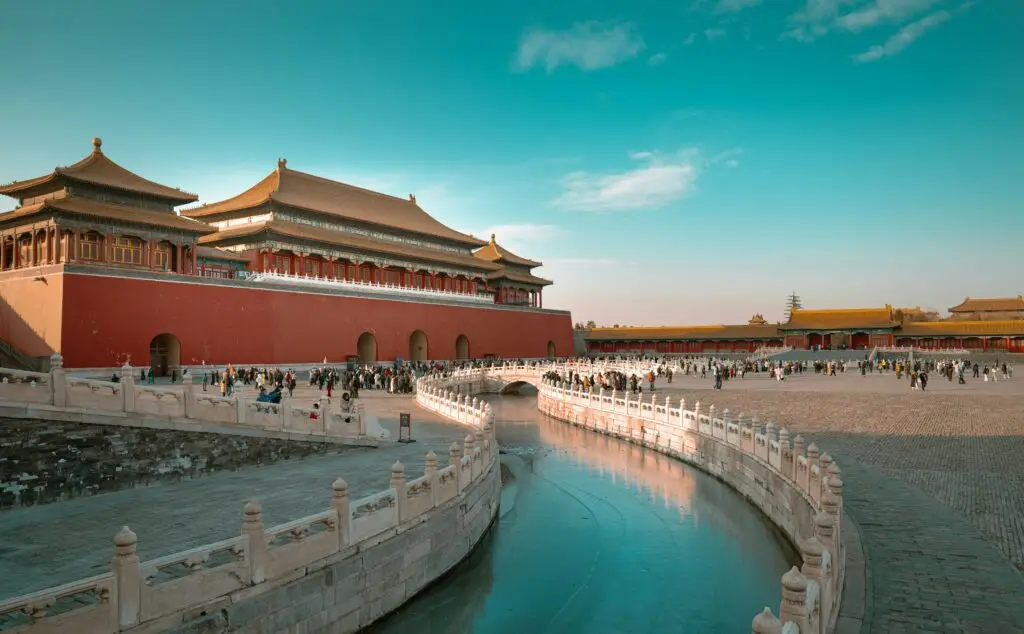Shanghai is often introduced as China’s dazzling modern metropolis, a place of neon skylines and futuristic skyscrapers. But if you slow your pace, peel back the layers, and wander through its older streets, you’ll discover that this city is also a living museum, where the footprints of centuries remain etched in stone, brick, and memory.
The journey begins at the Bund, Shanghai’s most iconic riverside promenade. Standing here at sunrise, when the Huangpu River glitters and the mist rises over Pudong’s skyline, you see two worlds colliding: on one side, futuristic towers like the Oriental Pearl and Shanghai Tower pierce the sky; on the other, a grand row of colonial-era buildings recalls a different time. These structures, with their Gothic spires, Baroque domes, and neoclassical façades, whisper the story of the 19th century, when Shanghai was carved into foreign concessions and became a cosmopolitan trading port. Walking along the Bund, you don’t just see buildings—you feel history in the granite under your shoes and in the old bank halls where fortunes were once made and lost.
From there, wander into the labyrinth of the Former French Concession. Its shady, plane-tree-lined boulevards seem to resist the rush of modern Shanghai. Here, Art Deco villas, red-brick townhouses, and charming courtyards tell stories of jazz musicians, writers, and revolutionaries who once found inspiration within these walls. Cafés and boutiques now fill many of these historic spaces, but the spirit of the past lingers. Walking these streets feels like drifting between Europe and China, past and present, all at once.
No historical journey is complete without a visit to Yuyuan Garden, the jewel of old Shanghai. Built in the Ming Dynasty over 400 years ago, its elegant pavilions, zigzag bridges, and koi-filled ponds evoke the refined life of classical China. Despite the bustling bazaar just outside its walls, the garden itself remains an oasis of calm, where every stone and lotus pond has been carefully placed to capture harmony and balance. Standing beneath the curved eaves of its ancient halls, it’s easy to imagine scholars sipping tea, writing poetry, and watching the seasons unfold.
For a glimpse into Shanghai’s spiritual heritage, the Jade Buddha Temple offers another kind of history. The temple is a sanctuary of incense, chanting monks, and serene courtyards. Inside, two exquisite jade Buddhas, brought from Burma in the late 19th century, radiate a quiet strength. It is a place where time seems to pause, even as the city outside rushes forward.
And then there is the lilong—Shanghai’s unique alleyway neighborhoods. These tightly knit residential lanes, a mix of Chinese and Western architecture, were once the beating heart of daily life. Though many have been replaced by modern developments, some still survive, like Tianzifang, where narrow lanes now brim with galleries, craft shops, and cafés. Strolling through them, you feel the texture of ordinary lives, where laundry hangs above your head and laughter echoes from hidden courtyards.
Even Shanghai’s museums deepen the journey. The Shanghai Museum, with its priceless bronzes, ceramics, and calligraphy, provides a window into millennia of Chinese civilization, while the Shanghai History Museum inside the old racecourse clock tower captures the city’s transformation from fishing village to financial hub.
Exploring Shanghai historically is like paging through a novel that refuses to end. Each district and landmark adds a new chapter, weaving together ancient dynasties, colonial encounters, revolutionary fervor, and rapid modernization. The city thrives on contrasts—its timeless gardens and temples standing in dialogue with soaring skyscrapers, its old lilong alleys tucked beside luxury malls.
To walk through Shanghai with history in mind is to feel the heartbeat of a city that has constantly reinvented itself, yet never forgotten its roots. And perhaps that is Shanghai’s greatest story: not a tale of the past or present alone, but of both entwined, carrying travelers into the future while keeping them grounded in history.

